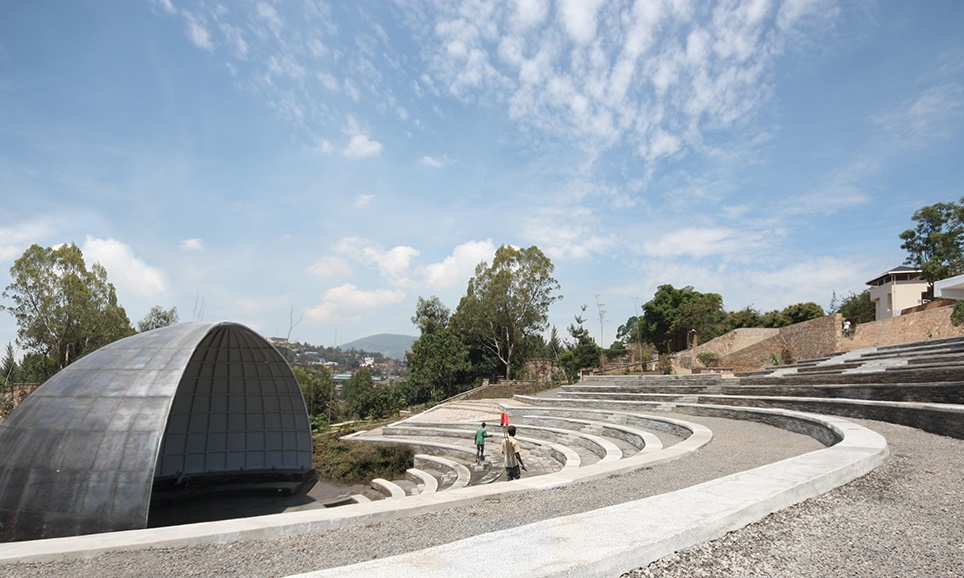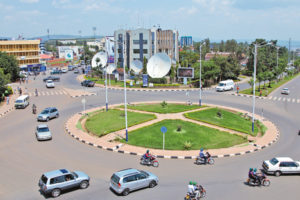Kigali city is a fabulous place to start or windup any Rwanda journey as it is ideally nestled in the geographic center of the country of a thousand hills, Rwanda. The city is very clean and safe with extremely welcoming people, thus being inevitable for city tours. Travelers will enjoy exploring the great cultural activities – including several award-winning museums, burgeoning music scene, and some of East Africa’s most memorable dining experiences. Some of the must visit attractions in Kigali include:
- 1994 Genocide Memorial Sites;
The 1994 Genocide Memorial Sites are the places where the genocide culprits’ bodies were buried in the transparent graves in order for the sites’ tourists to be offered with great views. Once you visit any of these sites, you will be given full details about the entire genocide period and how it came into existence – this will all be portrayed through videos and photos that will clearly describe on how everything came to happen. Below are the genocide memorial sites that you can give a visit to while in Kigali, Rwanda:
Kigali Genocide Memorial Site/Gisozi genocide memorial
The site is a final resting home to over 250,000 deceased victims of the 1994 Rwanda genocide culprits. This is a permanent memorial to those who fell victim to the genocide and serves as a place in which the bereaved could bury their family and friends. It is situated in Gisozi, about ten minutes drive from the centre of Kigali, and it is managed and run by the Aegis Trust on behalf of the National Commission for the Fight against Genocide. The site comprises of a visitor centre for students and those wishing to understand the events leading up to the events of 1994 genocide. If you are visiting the memorial you get a guide to walk you through it – the guide is usually a genocide survivor with his own story to tell. It is a very moving and meaningful experience. Not only documenting the 1994 genocide, the site also describes the history of Rwanda that preceded the event.
The site includes human remains and the tools and weapons that were used in the destruction. The upstairs floor, there are three permanent exhibitions – the largest of which documents the 1994 genocide, helping to give Rwanda’s nightmare a historical context. There is a children’s memorial, with life-sized photos, accompanied by intimate details about their favorite toys, their last words and the manner in which they were killed. There is also an exhibition on the history of genocidal violence around the world.
The Education Centre, Memorial Gardens and National Documentation Centre of the Genocide contribute to a meaningful tribute to those who perished and form a powerful educational tool for the next generation. The Kigali Memorial Centre is international and it deals with a topic of international importance, with far-reaching significance, and is designed to engage and challenge an international visitor base.
Nyamata Genocide Memorial Centre
Ntarama is located in Kigali district – just an hour’s drive south of Kigali, the national capital and largest city. Ntarama is a former Catholic church but now turned into a memorial site. 5,000 people were massacred there on 15th April 1994 during the Rwandan genocide. Most of the people killed from here were children and women. All the people who were hiding in the kitchen buildings were burned to death and the children were brought together in one school room and killed by smashing their skulls against the wall.
The wall is up to now stain with red blood from this style of execution. The women were raped before being killed as well as inserting sharp pointed sticks in their private parts until these sticks came out from the head. Many women were raped by these merciless people, most of whom were HIV positive. The blood stained clothes of the victim and the instruments used in the executions are all grouped at the front of the church.
This church also houses all the skulls and many other bones of the victims. Ntarama contains human clothing’s, remains and artifacts which belong to those who were killed at the church – these items have remained at display all times. During the Genocide, the Tutsi persecuted much of the population who sought sanctuary in the catholic churches believing that they would be protected and safe there. It is also thought that the church leaders informed the Hutus of the secret mass of Tutsi who were in the churches, and the Hutus stormed the churches and killed all the people.
Gisenyi Genocide Memorial Site
This was one of the very first memorial sites in Rwanda built by the IBIKA survivor organization together with the Rwandan ministry of sports and culture. The memorial is found on the outskirts of Gisenyi which borders the North Kivu region of the Democratic Republic of Congo. At first sight it appears to be a cemetery – however this memorial site contains the remains of 12,000 genocide victims that were killed during the 1994 Genocide. The bodies buried at this site were collected from Nyundo and the area of Corniche. In addition, Madame Carr’s grave is as well found in this area – she was an American who managed the Imbabazi orphanage.
Murambi Memorial Site
This memorial site is one of the six major sites in Rwanda that commemorate the Rwandan genocide, and it is situated near the town of Murambi in southern Rwanda. The site was before known as ‘’Murambi Technical School’’. According to the guide at the memorial, the French brought in heavy equipment to dig several pits where many thousands of bodies were placed. They then placed a volleyball court over the mass graves in an attempt to hide what happened. Among the bodies currently displayed are those of children and infants. The memorial was founded on 21st April 1995 and it contains 50,000 graves. The school building is now a genocide museum exhibiting the skeletons and mummified bodies of some of the thousands of people killed in Gikongoro Province in 1994. In his study of Rwandan genocide memorials, Timothy Long man argues that although the bodies on display at Murambi are presented as those of people killed on site, in reality they are bodies brought to Murambi from throughout the surrounding area. Those killed at Murambi were buried in mass graves on site in 1996.
Nyamata Church Memorial Site
The Nyamata Genocide Memorial is based around a former church, about 30 kilometers (19 miles) south of Kigali in Rwanda, which commemorates the Rwandan genocide in 1994. The remains of 50,000 people are buried here. Many Tutsi people gathered here as churches were considered a place of safety. About 10,000 people gathered here and the people locked themselves in. The church walls today show how the perpetrators made holes in the walls of the church so that grenades could be thrown into the church. After this, the people inside were shot or killed with machetes. The ceiling of the church shows the bullet holes and the altar cloth is still stained with blood. Most of the remains have been buried but clothing and identity cards are left. The identity cards were what identified people as to either were Tutsi or Hutu. People in the surrounding area were also killed after the massacre at the church.
Nyarubuye Genocide Memorial Site
The Nyarubuye Genocide Memorial is situated about 35 kilometers away from the southern town of Kibungo, in the Kirehe district, of the Eastern province. This former church and its accompanying school and buildings of the Benebikira Sisters are a reminder of the horrific violence that took place at this site during the Genocide against the Tutsi and Hutu. More than 20,000 people were killed there during the 14th and 15th of April 1994. These people had been trying to escape over the border to Tanzania. During 2003, the school became functional again; the convent, however, remains empty, apart from the bones of the victims, and will be turned into a memorial and education centre. In Nyarubuye Genocide Memorial, you can find genocide remains like clothes, thermoses, dishes, and shoes abandoned by victims which are all kept in the nunnery buildings.
Bisesero Memorial Site
The Bisesero Memorial Site, near Karongi – Kibuye – Western Rwanda, is one of the major memorial centers/sites in Rwanda that commemorates the Rwandan genocide in 1994 of which over 40,000 people died in the area around here. The majority of people who lived in Bisesero were Tutsi – cattle keepers. They staged a resistance against the soldiers and the Intarahamwe Militias for some days because they chose the top of the hill on which there were many rocks which they threw at the advancing attackers. However, they were eventually unsuccessful because they were fighting with sticks and rocks against well armed and trained soldiers and militias.
Over 40,000 Tutsi were killed and only a few Tutsi who lived in Bisesero escaped and survived. The memorial is set on a hill at the small settlement of Bisesero which is about 60 kilometers by road from Kibuye, Rwanda. Over 40,000 genocide culprits’ bodies are buried here and unusually these people offered some defense and they appealed to French Peace Keeping Troops for assistance before being murdered. The troops had no mandate to intervene and they withdrew from the carnage.
The memorial comprises of nine small buildings which represent the nine communes that formerly made up the province of Kibuye. Since 1998, with official burial ceremonies, and with collaboration with the National Museum of Rwanda, the Ministry of Youth, Sports and Culture has begun the treatment of human bones and skulls. They are now on display, but are still placed in a make-shift building made of wood and corrugated metal sheeting.
Nyanza Genocide Memorial Site
The memorial sits at the site where 2000 Tutsi, including 400 children, were butchered by Hutu militants. During your city tours in Rwanda, you can decide to visit this memorial site of which you will be moved by evidence of how the world failed to give protection to the innocent victims of the 1994 Rwanda genocide. On the first arrival of the United Nations Peacekeeping Force in Rwanda, soon after the onset of the brutal killings, a base was set up at the school called ‘’École Technique Officielle (ETO)’’. The school was situated in Kicukiro, on the outer sections of Kigali city. Thinking of it to be a safe haven protected by 90 Belgian peacekeeping personnel, Tutsi refugees began arriving at the station in the early hours of April 7, 1994. Relenting to their pleas for sanctuary, the soldiers allowed them to stay in the school compound.
Later on, the Hutu militants gunned down 10 Belgian soldiers at Camp Kigali, and the UN opted to pull out of Rwanda. Belgian troops departed the school, leaving the refugees to face their fate. The Hutu militia arrived and marched the refugees to Nyanza, a garbage dump, where they were mercilessly hacked to death. It is said that the refugees begged the Belgian soldiers not to leave, with some even asking to be shot rather than face a horrible death at the hands of Hutus. Some refugees lay down on the road, hoping to stop the Belgians from leaving but the Belgians responded by firing shots into the air as their convoy took off, leaving behind helpless men, women, and children who would soon meet their death.
In conclusion about these genocide sites, visitors can also go on to visit the Camp Kigali Belgian Monument, which was set in memory of the 10 Belgian UN Blue Beret Soldiers who were brutally butchered on this site. In an attempt to pressure the UN to withdraw its presence in Rwanda, these 10 soldiers were captured and transported by presidential guard troops to the camp, where they were tortured and killed by the perpetrators of the genocide. Their bodies were later mutilated and dumped at the morgue of a nearby hospital.
The massacre achieved the results desired by the perpetrators – the UN pulled its international peacekeeping forces out of Rwanda, hence leaving the country vulnerable to bloodshed and the horrors of genocide. At the Camp Kigali Belgian Monument, the main points of interest are the 10 pillars erected in memory of these brave men.
Etched on each pillar is the name and age of each man at the time of his death. The entire monument complex consists of one-story buildings, along with a small garden. You can visit the main room where shells and bullet holes remain in the spots where the men were gunned down by Hutu rebels.





Add Comment